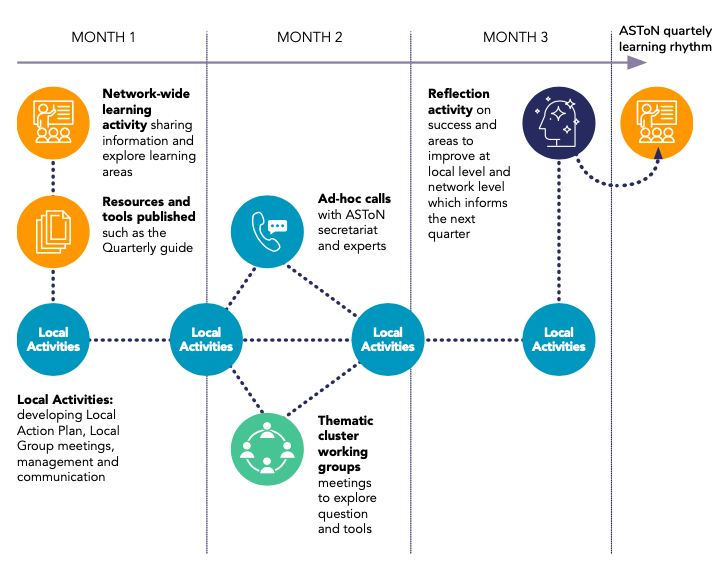Sharing internally
Internally, information sharing needs to be encouraged and purposefully facilitated:
• Making sure all cities have access to the same information, guidance and tools, calendar, deadlines and a repository of all ongoing cities projects;
• Allowing cities to go back to these materials if need be;
• Encouraging transparency and working in the open;
• Maintaining exchanges and connections between the city leaders in between meetings (online or offline), reinforcing the sense of belonging to a group of peers, and,
• Creating a safe space for cities to exchange ideas and express themselves.
Our approach and methods
• Tools and spaces for online collaboration. Think about which tools are provided to cities for them to collaborate well. For instance, ASToN (2019-2022) used
- Basecamp as the main intranet space to publish messages for the whole community, share documentation, the main calendar and deadlines for network inputs and outputs.
- WhatsApp for informal check ins and follow-ups.
Lessons learnt from ASToN (2019-2022):
• Go where the people are – the most efficient way to create a community for us was by going where the people were, i.e.
-
- WhatsApp – We realised people respond much faster using WhatsApp than using email (it is often perceived as a more formal way of communication and requires internal validation); By 2022, the #astonnetwork whatsapp group had more than 80 members, including people from the wider community, people that are no longer directly involved in the project. People share general updates about their ASToN local activities and other ongoing work, celebrating encounters, interesting events and publications.
- In line with the rhythms and availability of participants, we organised shorter but more frequent online gatherings.
- To give people energy, we made a point of celebrating when we were all together as a network, online or in-person.
• Make sure to identify clear points of contacts for participating teams.



